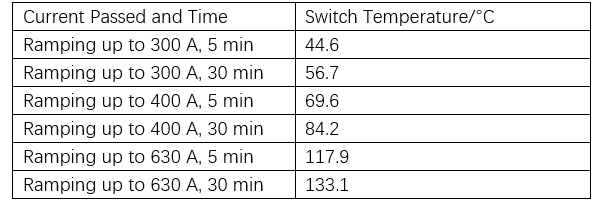Short-Circuit Fault Analysis of 10kV Puffer-Type Load Switch
Felix Spark
06/28/2025

- Spring selection: Adopt springs with high fatigue resistance to ensure stable spring force within the design life (including the condition of making and breaking the rated current ), avoiding contact problems caused by spring failure;
- Contact finger processing: Strictly control the processing precision of the arc surface and plane of the plum - shaped contact fingers to ensure complete fitting with the cylindrical arc surface of the movable contact rod, eliminating the hidden dangers of line contact/point contact, and ensuring the current - carrying capacity and temperature rise compliance of the contacts.
- Temperature measurement window and probe: Set up a convenient temperature measurement window, install a temperature probe at the static contact, and display the temperature of the contact part inside the cabinet in real - time through the panel instrument;
- Data storage and early warning: Configure storage equipment to record operating data. Even if the equipment ages, abnormal situations can be identified in advance through data analysis, triggering the replacement and maintenance process, shifting from passive repair to active operation and maintenance.
Hey there! I'm an electrical engineer specializing in Failure and Maintenance. I've dedicated my career to ensuring the seamless operation of electrical systems. I excel at diagnosing complex electrical failures, from malfunctioning industrial motors to glitchy power distribution networks. Using state - of - the - art diagnostic tools and my in - depth knowledge, I pinpoint issues quickly. On this platform, I'm eager to share my insights, exchange ideas, and collaborate with fellow experts. Let's work together to enhance the reliability of electrical setups.

Method for Automatic Isolation of Customer Equipment Faults by Load Switches in Distribution Networks
1 OverviewDistribution network safety has long been under - addressed, with its automation lagging substation automation . Using 10 kV intervals of existing substations to set line section points meets future grid needs . Configuration of distribution switches, section switches, and protection must match substation outgoing - line protection for reliability. Fault isolation, self - healing, and restoration are key to distribution automation .Scholars have studied smart distribution network fault
Felix Spark
06/30/2025

A Novel Detection Method for Stuck Faults in Load Switches
In recent years, as distribution automation advances, load switches see wider use in distribution lines. Yet, mechanical - failure - induced accidents are on the rise, burdening line operation and maintenance.Poor mechanical performance is the main cause of switch faults. Many scholars study large - scale switchgear operation, using methods like coil current detection, vibration signal analysis, switch travel testing, ultrasonic flaw detection, and infrared thermometry. Motor - current - based s
Oliver Watts
06/30/2025

What You Need to Know About Load Switch Malfunctions
Hey there, I’m Blue — been working as an electrical engineer for more than 20 years now.I’ve spent most of my career designing circuit breakers, managing transformers, and helping power companies solve all sorts of electrical system challenges.Today, a friend from Southeast Asia asked me:"What are the common faults of load switches?"Great question! So let’s break it down in simple terms — no fancy jargon, just real-world stuff you might actually see on the job or during maintenance.First, What E
Master Electrician
06/30/2025

What tests need to be conducted for load switches?
As a technician with years of on-site experience in power testing, I understand the importance and complexity of load switch testing. Below, I combine practical work experience to elaborate on the full process of load switch testing, from testing items and methods to equipment and procedural specifications.I. Routine Electrical Performance Testing(1) Loop Resistance TestLoop resistance is a core indicator for evaluating a load switch's conductivity. I strictly follow GB/T 3804 and GB 1984 standa
Oliver Watts
06/28/2025










